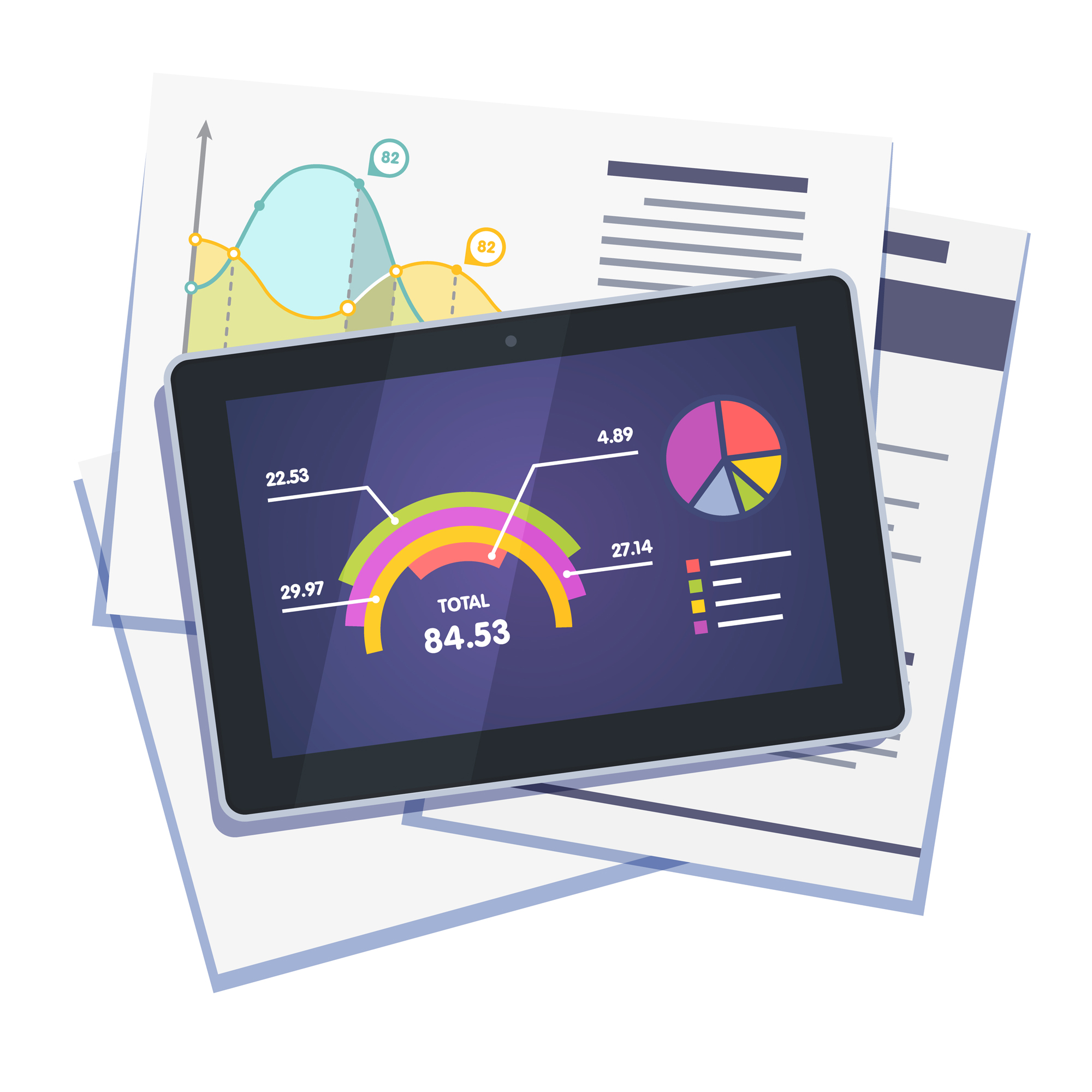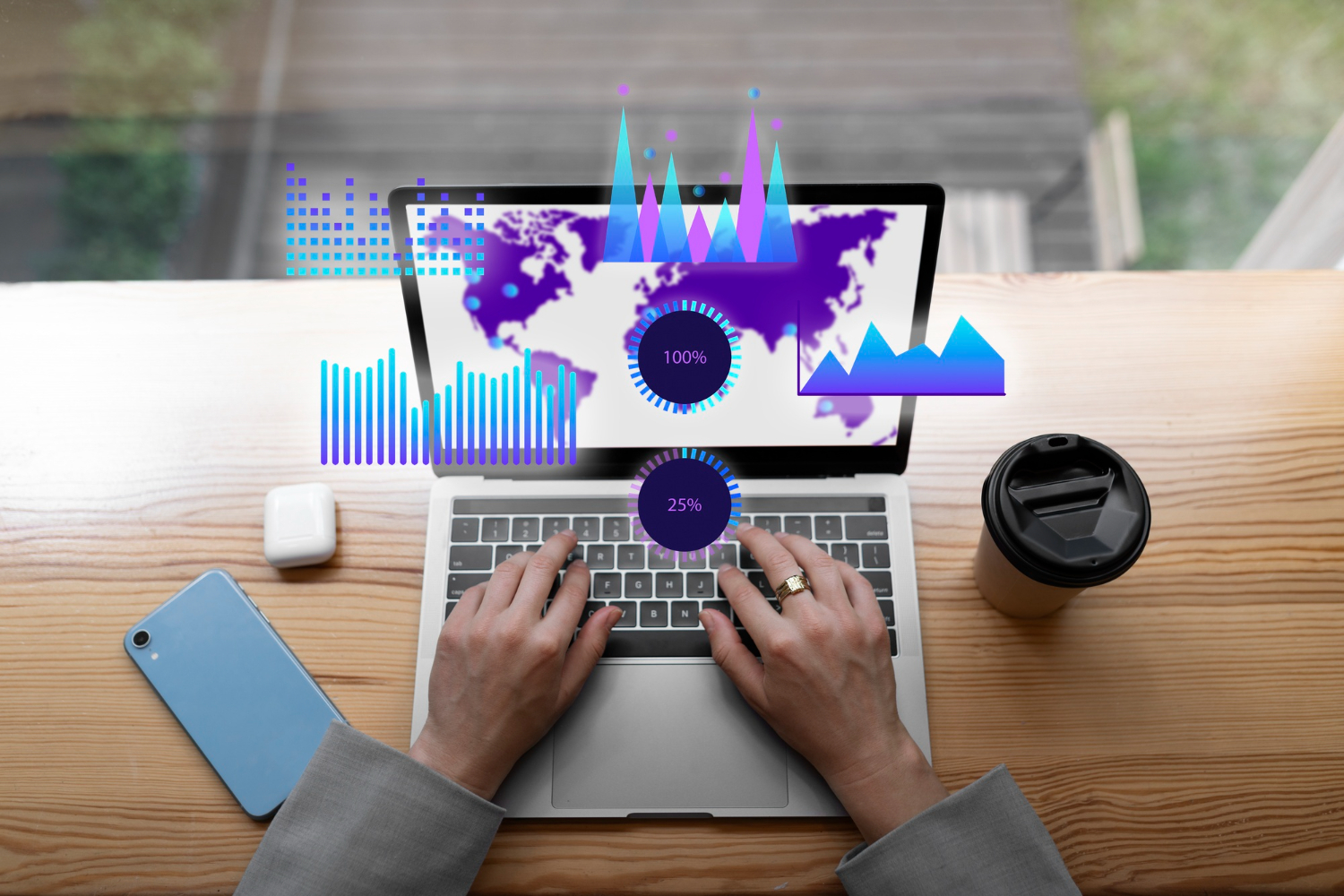Conversion rate optimization transforms e-commerce businesses from struggling to thriving by turning more visitors into paying customers.
Despite investing heavily in driving traffic, many online stores still see only 1-3% of visitors complete a purchase, leaving significant revenue on the table.
Most e-commerce professionals know analytics matter, but few fully leverage this data to make strategic decisions.
Instead of guessing what might work, today's growth strategists use systematic approaches to understand customer behavior and optimize accordingly.
Furthermore, with the increasingly competitive digital landscape of 2025, businesses can no longer afford to ignore their conversion metrics.
This comprehensive guide explores how to combine powerful analytics with proven conversion rate optimization techniques.
You'll discover which metrics actually matter, learn a step-by-step framework for implementing CRO, and see real examples of brands that have significantly increased their revenue through data-driven strategies.
Whether you manage a small Shopify store or oversee a large e-commerce operation, these insights will help you build a more profitable online business.

Understanding E-Commerce Analytics in 2025
Data tells the story of your e-commerce business in ways that gut feelings simply cannot.
In 2025, the difference between thriving online stores and those barely surviving often comes down to how well they understand and apply their analytics data.

What is e-commerce analytics?
E-commerce analytics involves collecting, measuring, and analyzing data from your online store to understand customer behavior, marketing performance, and sales patterns.
Unlike basic web analytics, e-commerce analytics specifically focuses on the customer journey from first click to purchase completion and beyond.
Modern e-commerce analytics goes well beyond counting page views or tracking time on site. It creates a comprehensive view of how customers interact with your brand across multiple touchpoints, revealing opportunities to increase conversions and boost revenue.
Many growth strategists mistakenly believe they're using analytics effectively when they're merely scratching the surface.
True e-commerce analytics integrates data from various sources—your store platform, ad accounts, email campaigns, and customer service interactions—to form a cohesive picture of your business health.
Why analytics is the foundation of growth
The most successful e-commerce brands prioritize data over assumptions. As one performance marketing agency notes,
"Most agencies have it wrong! They focus on clicks and traffic, but you can't take those to the bank." This highlights the crucial shift from traffic-obsessed to ROI-driven decision making.
When properly implemented, analytics reveals exactly which elements of your marketing and user experience drive actual sales—
not just engagement metrics that feel good but don't translate to revenue. Moreover, analytics helps identify friction points that prevent browsers from becoming buyers.
E-commerce analytics enables precise allocation of your marketing budget. Rather than spreading resources thin across multiple channels, you can double down on what the data shows is working.
This approach has helped agencies turn "$1 into $9" for their clients through data-fueled marketing strategies.
Key metrics every strategist should track
While there are hundreds of possible metrics to monitor, successful growth strategists focus on those directly tied to revenue and profitability:
- Conversion Rate - The percentage of visitors who complete a desired action, typically making a purchase
- Average Order Value (AOV) - The average amount spent each time a customer places an order
- Customer Acquisition Cost (CAC) - How much you spend to acquire a new customer
- Return on Ad Spend (ROAS) - The revenue generated for every dollar spent on advertising
- Customer Lifetime Value (CLV) - The total worth of a customer over the entire relationship
Additionally, tracking your funnel metrics at each stage helps identify exactly where potential customers drop off.
This granular view enables targeted optimization efforts rather than overhauling your entire site.
The power of analytics comes not just from tracking these metrics in isolation, but from understanding how they interact.
For example, increasing conversion rates while maintaining the same traffic can dramatically boost your bottom line without additional ad spend.
Many e-commerce brands also benefit from segment-specific analysis—breaking down performance by product categories, traffic sources, customer demographics, or geographic regions.
This level of detail often reveals growth opportunities that aggregate data would mask.
The Role of Conversion Rate Optimization (CRO)
Every click on your website represents potential revenue, yet most businesses leave money on the table by neglecting optimization.
In an era where acquisition costs continue to rise, squeezing more value from existing traffic has become essential for sustainable growth.
What is CRO and why it matters
Conversion Rate Optimization (CRO) is the systematic process of increasing the percentage of website visitors who take desired actions—from making purchases to signing up for newsletters.
Unlike driving more traffic, CRO focuses on making your existing traffic work harder for your business.
Performance-driven agencies understand this distinction perfectly. As one growth agency puts it, "Most agencies have it wrong!
They focus on clicks and traffic, but you can't take those to the bank." This highlights an essential truth: traffic without conversion is merely expensive window shopping.
CRO matters particularly in 2025 because:
- Customer acquisition costs have increased substantially across platforms
- Consumer attention spans continue to shrink
- Competition in virtually every e-commerce niche has intensified
- Each percentage point improvement in conversion rate directly enhances profitability
Essentially, CRO transforms underperforming assets (your website and landing pages) into revenue-generating machines without requiring additional traffic investment.
How CRO impacts your bottom line
The financial impact of CRO is immediate and multiplicative. Consider a simple equation: if your store receives 10,000 monthly visitors with a 2% conversion rate and $50 average order value, you generate $10,000 monthly.
Increasing your conversion rate to just 3% would yield $15,000—a 50% revenue increase without spending an additional dollar on traffic.
This mathematical reality explains why truly ROI-focused agencies prioritize conversion optimization alongside traffic generation.
In fact, many performance marketing experts report turning "$1 into $9" through meticulous optimization strategies.
Beyond the immediate revenue lift, effective CRO:
- Decreases customer acquisition costs by getting more value from each visitor
- Improves customer experience, naturally leading to higher retention
- Provides invaluable insights about customer preferences and behavior
- Creates compound growth when combined with traffic increases
For e-commerce brands that have implemented serious CRO programs, the results can be dramatic.
Case studies frequently show conversion improvements of 30-300%, directly translating to proportional revenue increases.
Common myths about CRO
Despite its importance, CRO remains misunderstood by many e-commerce operators:
Myth 1: CRO is just about A/B testing In reality, comprehensive CRO involves customer research, behavioral analysis, psychology, and strategic implementation—not just testing button colors.
Myth 2: CRO requires massive traffic Even smaller stores can implement effective CRO strategies by focusing on qualitative research and fundamental conversion principles when sample sizes are too small for statistical significance.
Myth 3: CRO is a one-time project Successful CRO is an ongoing process, not a set-it-and-forget-it task. Consumer preferences evolve, competitors adjust, and continuous optimization is necessary.
Myth 4: CRO is expensive and complicated Although advanced CRO can involve sophisticated tools, basic optimization can begin with simple analytics and user feedback—making it accessible to businesses of all sizes.
Given that properly executed CRO can triple ROAS (Return on Ad Spend), the question isn't whether you should invest in CRO, but rather how quickly you can implement a structured approach to conversion optimization.

Step-by-Step Framework for Data-Driven Growth
Turning analytics data into meaningful growth requires a systematic approach. The difference between successful e-commerce brands and those struggling often comes down to their implementation framework.
Let's break down the step-by-step process that performance-focused agencies use to drive results.
1. Audit your current analytics setup
Successful conversion rate optimization begins with ensuring your analytics foundation is solid. First, review your tracking implementation—checking that events fire correctly and data flows properly between systems.
Many brands discover significant gaps in their tracking during this initial audit.
Look specifically for:
- Missing conversion events
- Broken tracking codes
- Disconnected data sources
- Improper attribution settings
Growth-focused agencies emphasize this first step because "you can't improve what you don't measure." Consequently, fixing analytics issues often reveals immediate opportunities before any optimization begins.
2. Define clear conversion goals
Vague objectives lead to unfocused efforts. Successful e-commerce strategists establish specific, measurable conversion goals tied directly to business outcomes.
During kickoff calls, performance agencies typically "build an account strategy hand-in-hand by establishing clear goals and objectives."
These goals should include both macro-conversions (purchases, sign-ups) and micro-conversions (add-to-carts, email captures) that indicate progress through your funnel.
By defining these clearly, you create benchmarks against which all optimization efforts can be measured.
3. Segment your audience for better insights
Treating all visitors as a single group masks critical insights. Smart strategists segment audiences based on behavior, demographics, and acquisition source to uncover hidden patterns.
From the front lines of customer interaction, agencies gather "insights from those on the front lines of your company, like sales reps and receptionists, to get a comprehensive understanding of what your customers want." These customer-level insights help create meaningful segments that reveal different conversion barriers for different groups.
4. Set up A/B testing and multivariate testing
Testing removes guesswork from the optimization process. Successful growth teams "establish a clear testing schedule based on what is most urgent in the account."
This prioritization ensures resources focus on areas with the greatest potential impact.
For effective testing:
- Formulate clear hypotheses based on data
- Test one variable at a time in A/B tests
- Use multivariate testing for complex page elements
- Ensure sufficient traffic for statistical significance
5. Use heatmaps and session recordings
Numbers tell what is happening, but visualizations show how and why. Heatmaps reveal where visitors click, move, and scroll on your pages, while session recordings capture the actual user experience.
These tools help identify issues that analytics alone might miss—confusing navigation, ignored call-to-action buttons, or content that visitors never see.
Performance marketers use these insights to "continuously optimize your customer acquisition efforts through a multidimensional approach" that addresses real user behavior.
Throughout this process, remember that optimization is iterative. As top agencies note, "As we learn what's working and what's not working, we optimize and iterate new ads accordingly."
The same principle applies to your entire conversion optimization strategy.
Tools and Platforms to Supercharge Your Strategy
The right tools can dramatically amplify your e-commerce performance, turning good strategies into exceptional results.
Selecting the appropriate platforms for your analytics and conversion stack is crucial for implementing the frameworks discussed earlier.
Google Analytics 4
At the core of most e-commerce analytics stacks sits Google Analytics 4 (GA4), which has replaced Universal Analytics with a more event-based, cross-platform measurement approach.
GA4 excels at tracking user journeys across multiple sessions and devices, providing a comprehensive view of the customer path to purchase.
What distinguishes GA4 is its ability to use machine learning to identify trends and make predictions about customer behavior—such as which visitors are most likely to convert or churn.
These insights enable you to create targeted campaigns for specific audience segments, ultimately increasing your conversion rates.
For e-commerce businesses specifically, GA4's enhanced e-commerce reporting helps identify which products drive the most revenue, which are frequently abandoned in carts, and where customers typically exit your purchase funnel.
Hotjar and Crazy Egg
Whereas GA4 tells you what users are doing, heatmap tools like Hotjar and Crazy Egg show you how they're interacting with your pages.
These visual analytics tools provide invaluable qualitative insights through:
- Heatmaps showing where users click, move, and scroll
- Session recordings capturing real user interactions
- Feedback polls gathering direct visitor input
These tools help identify usability issues that quantitative data alone might miss—like confusing navigation elements or CTAs that get overlooked.
By visualizing user behavior, you can quickly pinpoint conversion barriers and prioritize fixes based on actual user interaction patterns.
Shopify and WooCommerce analytics
Platform-specific analytics offer unique insights tailored to e-commerce operations.
Shopify Analytics provides built-in dashboards focusing on store performance, including average order value, shopping cart analysis, and return customer rate.
Similarly, WooCommerce with its analytics extensions delivers merchant-focused metrics like inventory performance and product comparison data.
Both platforms integrate with third-party tools while providing specialized reporting that generic analytics tools might lack.
Facebook Pixel and Meta Ads Manager
With Facebook's massive user base—2.6 billion monthly active users and 1.73 billion daily active users—Meta's advertising ecosystem remains essential for e-commerce growth.
The Facebook Pixel enables cross-platform tracking while Meta Ads Manager provides granular campaign optimization.
Meta's platforms generated $17.44 billion in ad revenue during Q1 2021, with average revenue per user at $6.95.
This scale enables powerful remarketing capabilities essential for conversion rate optimization, especially for abandoned cart recovery and personalized product recommendations.
Klaviyo and email performance tracking
Email marketing continues to deliver exceptional ROI, with Klaviyo standing out for its e-commerce focus.
Its strength lies in combining behavioral analytics with automation capabilities, enabling highly targeted messaging based on user actions.
Klaviyo's performance tracking goes beyond open rates to measure revenue attribution—showing exactly how much money each email campaign generates.
This connection between marketing activities and revenue outcomes epitomizes the data-driven approach that successful growth strategists employ.
Real-World Examples and Case Studies
Behind every successful e-commerce strategy lies a story of trial, error, and data-driven decisions.
These real-world examples illustrate the tangible impact of proper conversion rate optimization.
How a skincare brand tripled conversions
CION Skincare partnered with a performance marketing agency to revamp their Facebook ads and email marketing strategy.
Initially, they struggled with low engagement and poor ROAS. Following a comprehensive CRO workshop, they implemented creative testing and audience segmentation.
The founder of CION describes this partnership as "essential for starting and growing my online business."
Through systematic optimization, they eventually tripled their conversion rates by focusing on high-performing creative assets.
Lessons from a DTC apparel brand
One apparel brand saw their top-line revenue "more than double" after implementing a data-driven approach to optimization.
Their success stemmed from recognizing that traffic alone wasn't valuable without conversions.
By establishing clear testing schedules based on account priorities, they discovered their customers responded best to lifestyle imagery featuring their products.
Remarkably, their approach turned "$1 into $9" through strategic optimization.

What we learned from a failed CRO test
Even successful agencies encounter failures. One e-commerce brand experimented with minimalist landing pages that performed worse than their original design.
Nevertheless, this failure provided valuable insights: their audience preferred information-rich pages over simplified versions.
Subsequently, they modified their approach to "optimize and iterate" based on actual customer behavior, ultimately achieving a 3X increase in sales.
Conclusion
E-commerce analytics and conversion rate optimization represent the cornerstone of sustainable online business growth.
Throughout this guide, we've seen how successful brands transform visitor data into actionable strategies rather than simply chasing traffic.
The math speaks for itself—even a 1% improvement in conversion rate can significantly boost your bottom line without spending another dollar on acquisition.
Data tells a story that intuition alone cannot reveal. Therefore, establishing proper tracking fundamentals must precede any optimization effort.
Your analytics setup captures what happens, while tools like heatmaps and session recordings show why it happens—both equally essential for complete understanding.
The step-by-step framework outlined provides a roadmap for systematic improvement. First, audit your analytics setup.
Then define clear goals, segment your audience, implement testing, and use visual tools to understand behavior.
This methodical approach eliminates guesswork and focuses resources on changes with the highest potential impact.
Success stories from skincare, apparel, and other e-commerce brands demonstrate these principles in action. Even failed tests yield valuable insights when approached with a data-driven mindset.
The brands that turned "$1 into $9" didn't achieve this through random tactics but through careful analysis and strategic optimization.
Additionally, the right tool stack amplifies your efforts. Google Analytics 4 forms the quantitative foundation, while specialized platforms like Hotjar provide qualitative insights.
Platform-specific analytics from Shopify or WooCommerce offer merchant-focused metrics that generic tools might miss.
The e-commerce landscape will undoubtedly continue evolving, but the fundamental principles of analytics and CRO remain constant.
Businesses that prioritize understanding customer behavior and systematically improving their conversion funnel will outperform those fixated solely on traffic generation.
Your e-commerce store contains hidden revenue opportunities waiting to be discovered through proper analysis. Each percentage point improvement in conversion rate compounds when combined with strategic traffic growth.
Analytics and CRO thus form not just best practices but essential components of a profitable online business strategy in 2025 and beyond.











